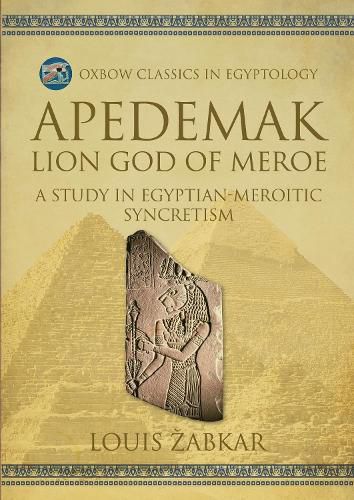Readings Newsletter
Become a Readings Member to make your shopping experience even easier.
Sign in or sign up for free!
You’re not far away from qualifying for FREE standard shipping within Australia
You’ve qualified for FREE standard shipping within Australia
The cart is loading…






The rescue excavation of Egyptian sites in advance of construction of the Assuan Dam contributed greatly to the understanding of the ancient Egyptian and Sudanese civilisations in the Nile valley. This book examines cultural relationships in the last centuries BC and first centuries AD centred on the ancient city of Meroe, which lies on the east bank of the Nile between the Fifth and Sixth Cataracts. It was one of two principal cities, and the centre of political and religious power, of a civilisation that flourished between the 8th century BC and 4th century AD, extending over the area of northern Sudan. The Meroites were strongly influenced by Egyptian religion, architecture and art, adopting Egyptian hieroglyphs but later developing their own hieroglyphic and cursive script - representing the first of the ancient languages of Africa to be committed to writing. They worshipped Egyptian gods alongside their own deities, including Apedemak, here compared with the Egyptian lion-god Mahes and other Egyptian and Nubian lion-gods. A decorative figure found during excavations at Semna South in the Sudan is key to the discussion of the origin of particular features in representations of the Meriotic god and the extension of his worship to the north.
The study, republished here in facsimile, shows that worship of Apedemak can be viewed within a wider framework of a contemporary religious and artistic trend, often referred to as a syncretistic trend or movement, which can be described as a process by which one deity could become assimilated with another with which it could share similar attributes, perform the same functions and exhibit the same representational features. Thus, old Egyptian gods and goddesses, their myths, legends and accoutrements, could be introduced into the new religious centres of Egypt's southern neighbours, Nubia and Meroe, where they were adapted to new local cults and, in some instances, became associated with the principal native deities.
$9.00 standard shipping within Australia
FREE standard shipping within Australia for orders over $100.00
Express & International shipping calculated at checkout
Stock availability can be subject to change without notice. We recommend calling the shop or contacting our online team to check availability of low stock items. Please see our Shopping Online page for more details.
The rescue excavation of Egyptian sites in advance of construction of the Assuan Dam contributed greatly to the understanding of the ancient Egyptian and Sudanese civilisations in the Nile valley. This book examines cultural relationships in the last centuries BC and first centuries AD centred on the ancient city of Meroe, which lies on the east bank of the Nile between the Fifth and Sixth Cataracts. It was one of two principal cities, and the centre of political and religious power, of a civilisation that flourished between the 8th century BC and 4th century AD, extending over the area of northern Sudan. The Meroites were strongly influenced by Egyptian religion, architecture and art, adopting Egyptian hieroglyphs but later developing their own hieroglyphic and cursive script - representing the first of the ancient languages of Africa to be committed to writing. They worshipped Egyptian gods alongside their own deities, including Apedemak, here compared with the Egyptian lion-god Mahes and other Egyptian and Nubian lion-gods. A decorative figure found during excavations at Semna South in the Sudan is key to the discussion of the origin of particular features in representations of the Meriotic god and the extension of his worship to the north.
The study, republished here in facsimile, shows that worship of Apedemak can be viewed within a wider framework of a contemporary religious and artistic trend, often referred to as a syncretistic trend or movement, which can be described as a process by which one deity could become assimilated with another with which it could share similar attributes, perform the same functions and exhibit the same representational features. Thus, old Egyptian gods and goddesses, their myths, legends and accoutrements, could be introduced into the new religious centres of Egypt's southern neighbours, Nubia and Meroe, where they were adapted to new local cults and, in some instances, became associated with the principal native deities.